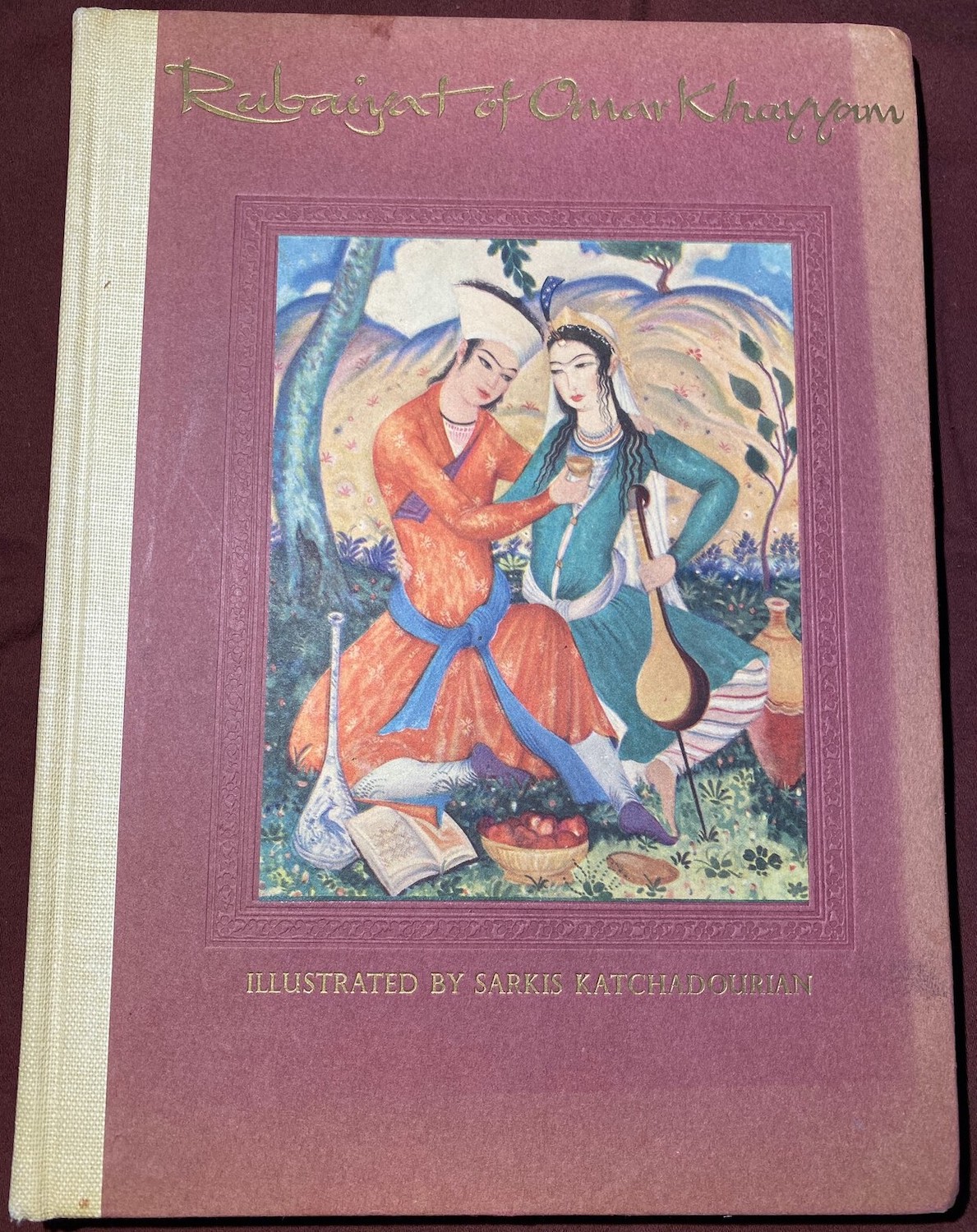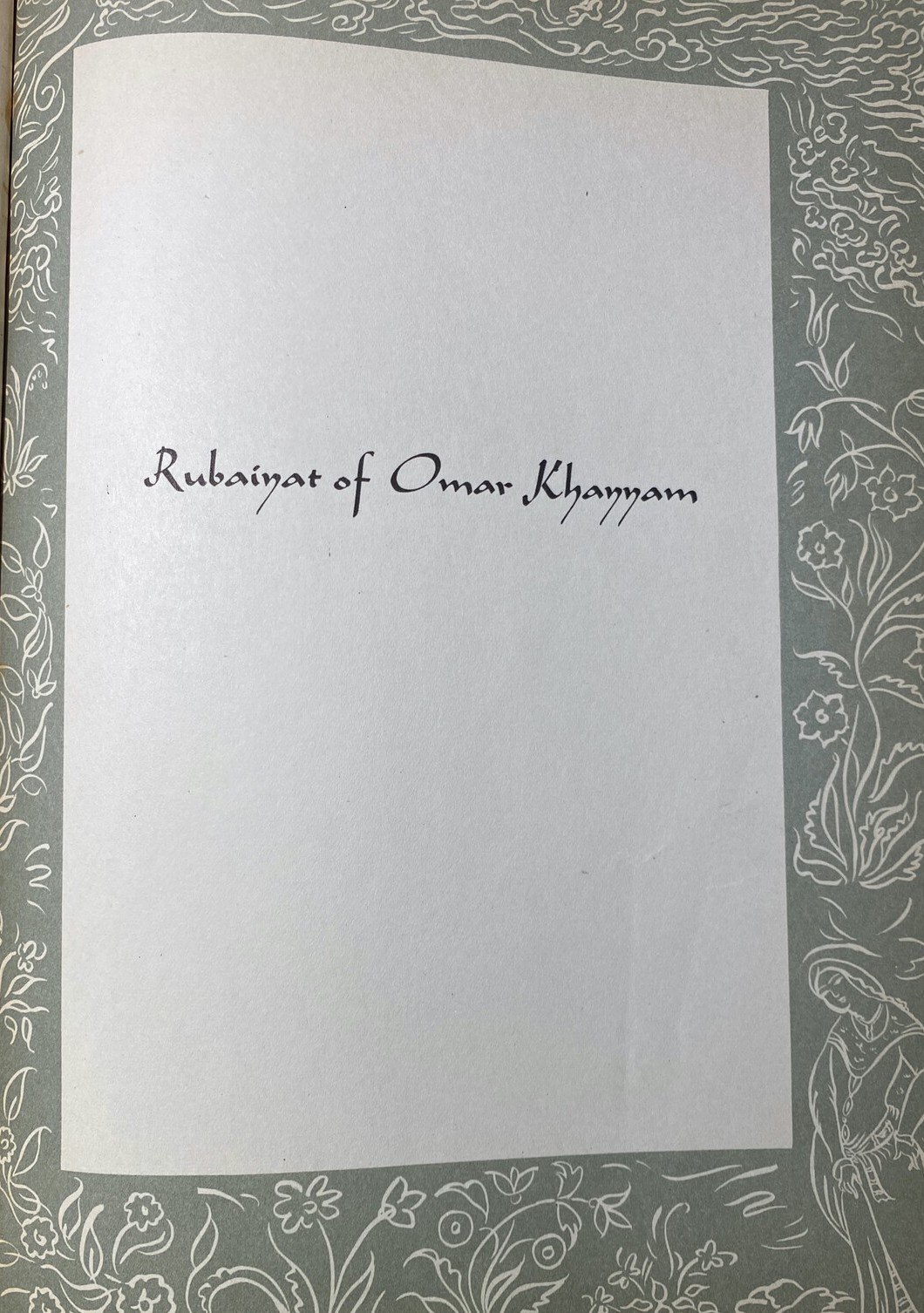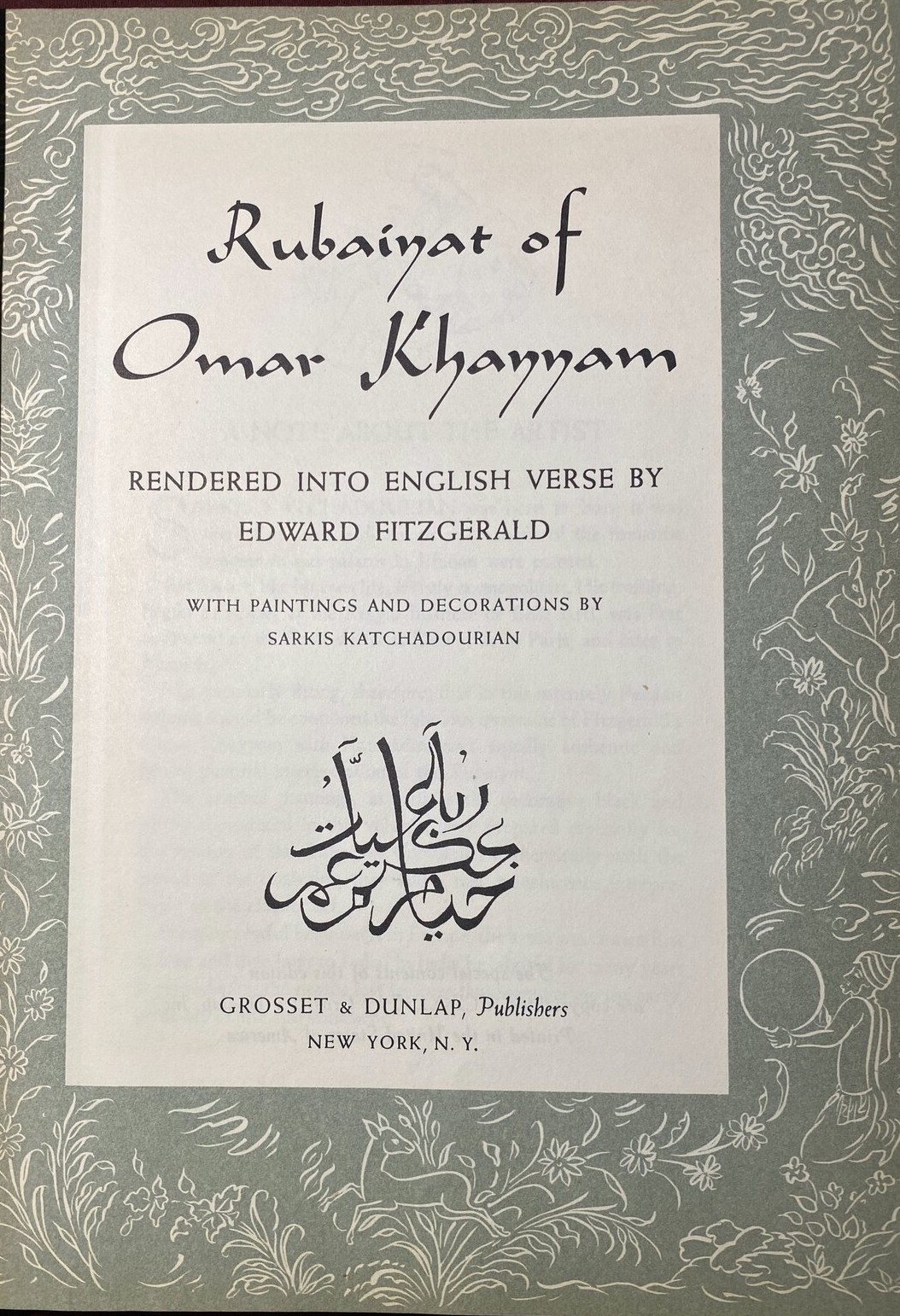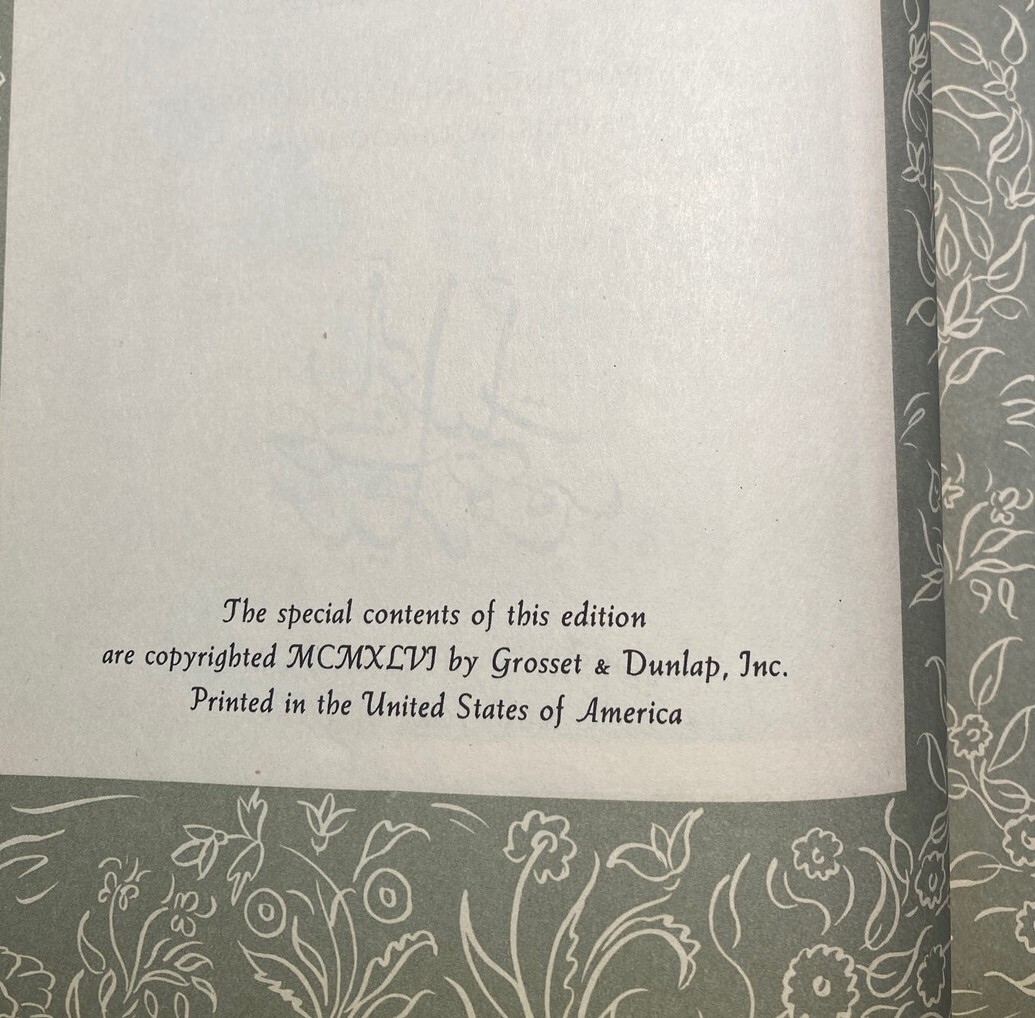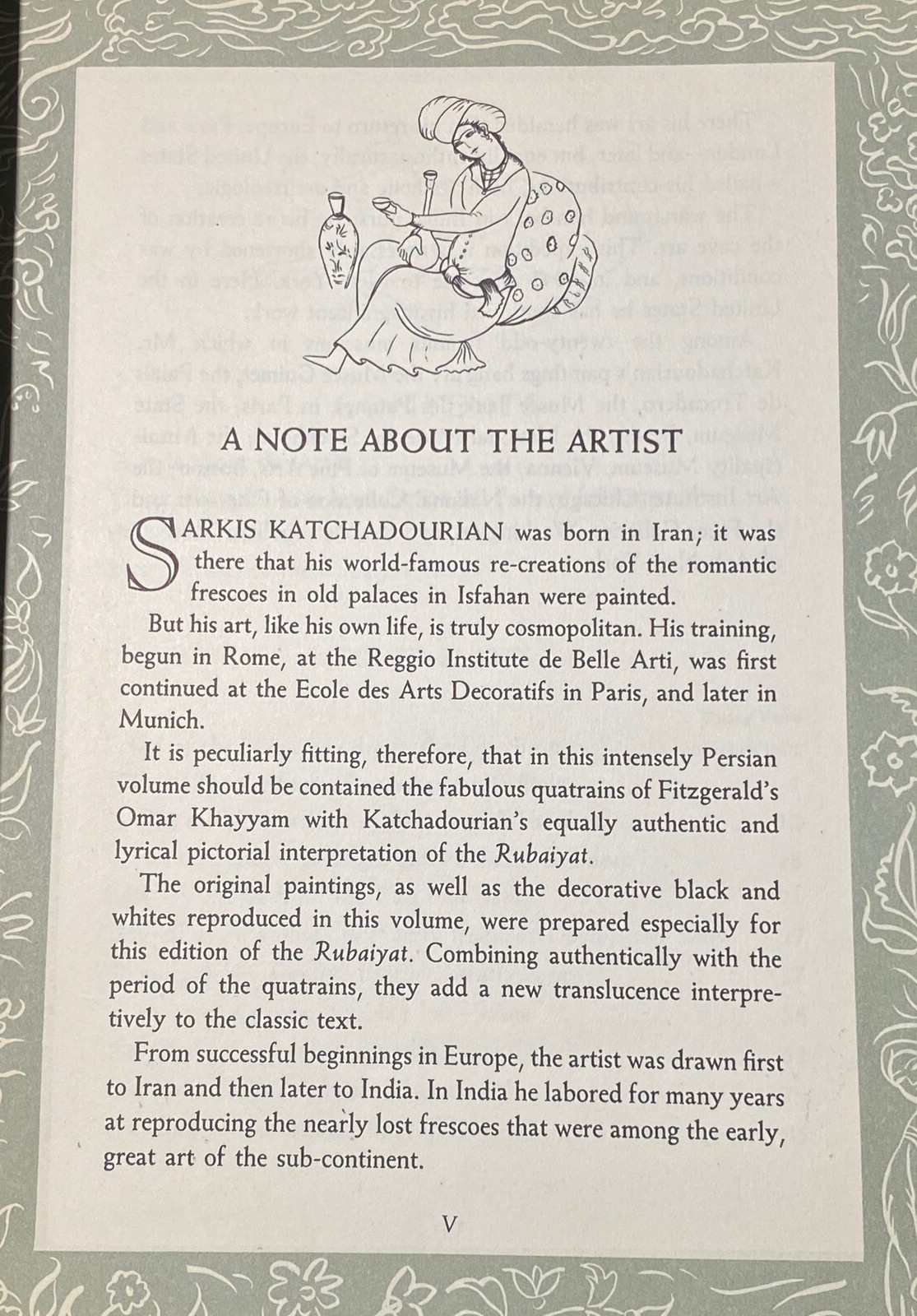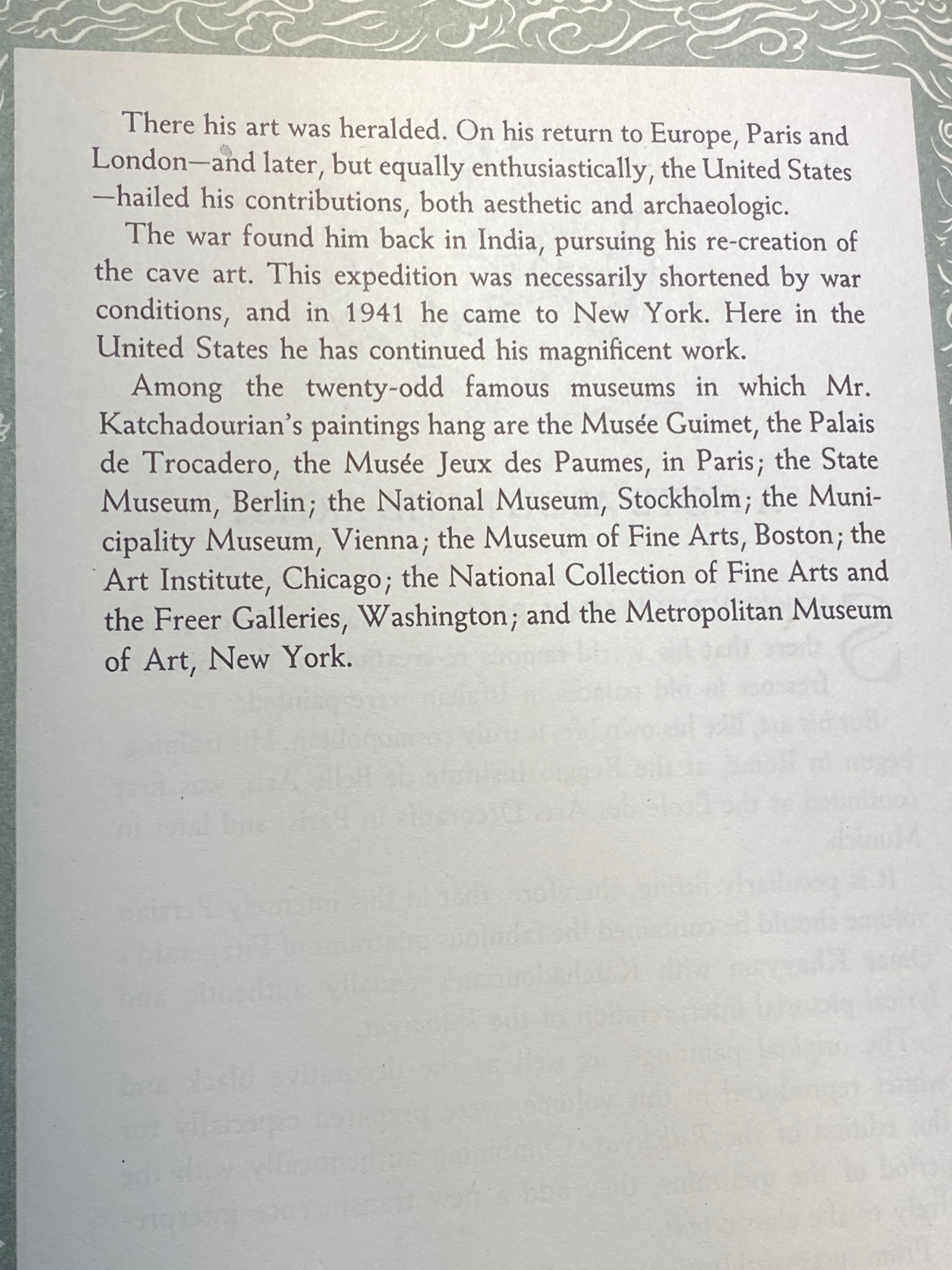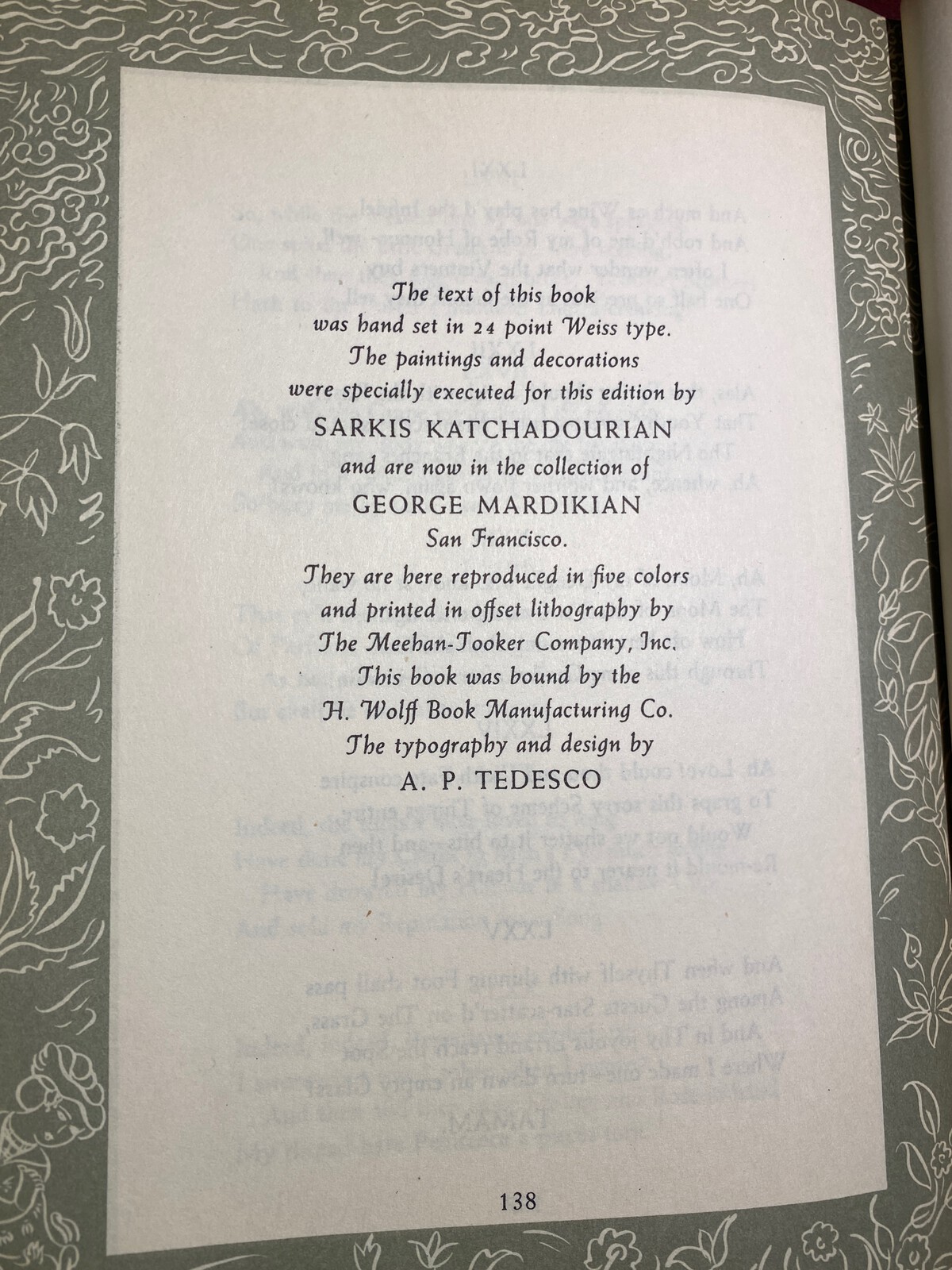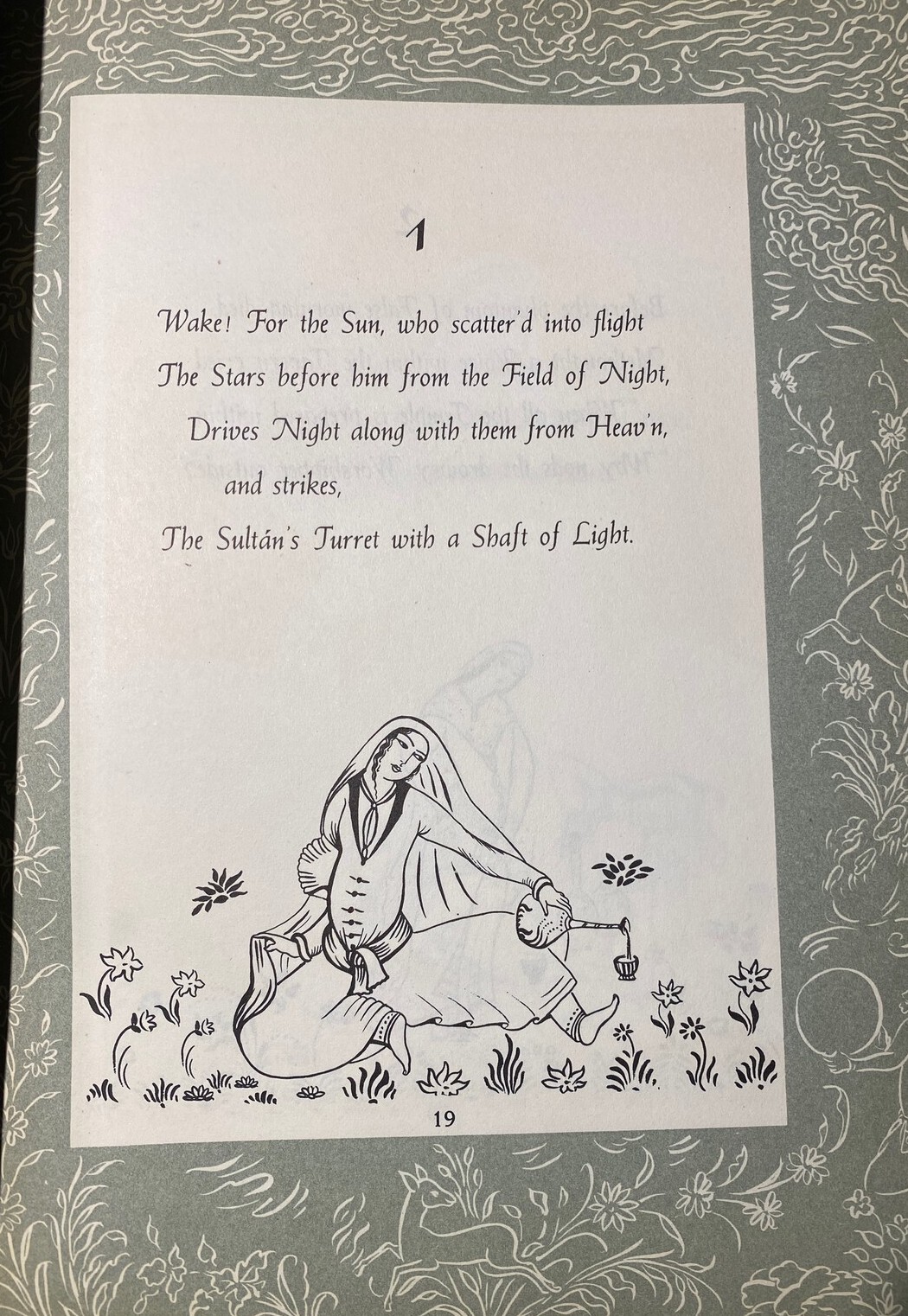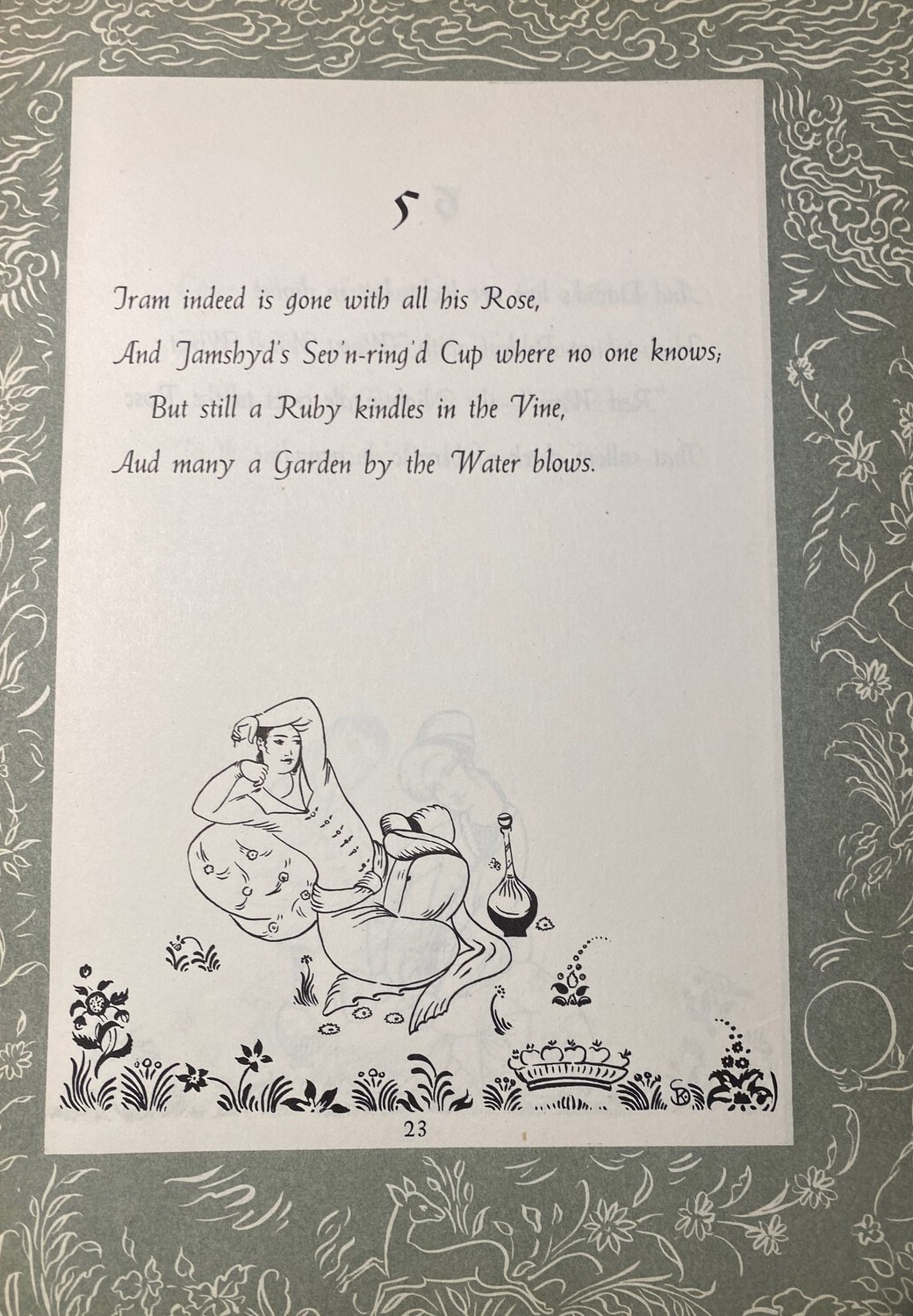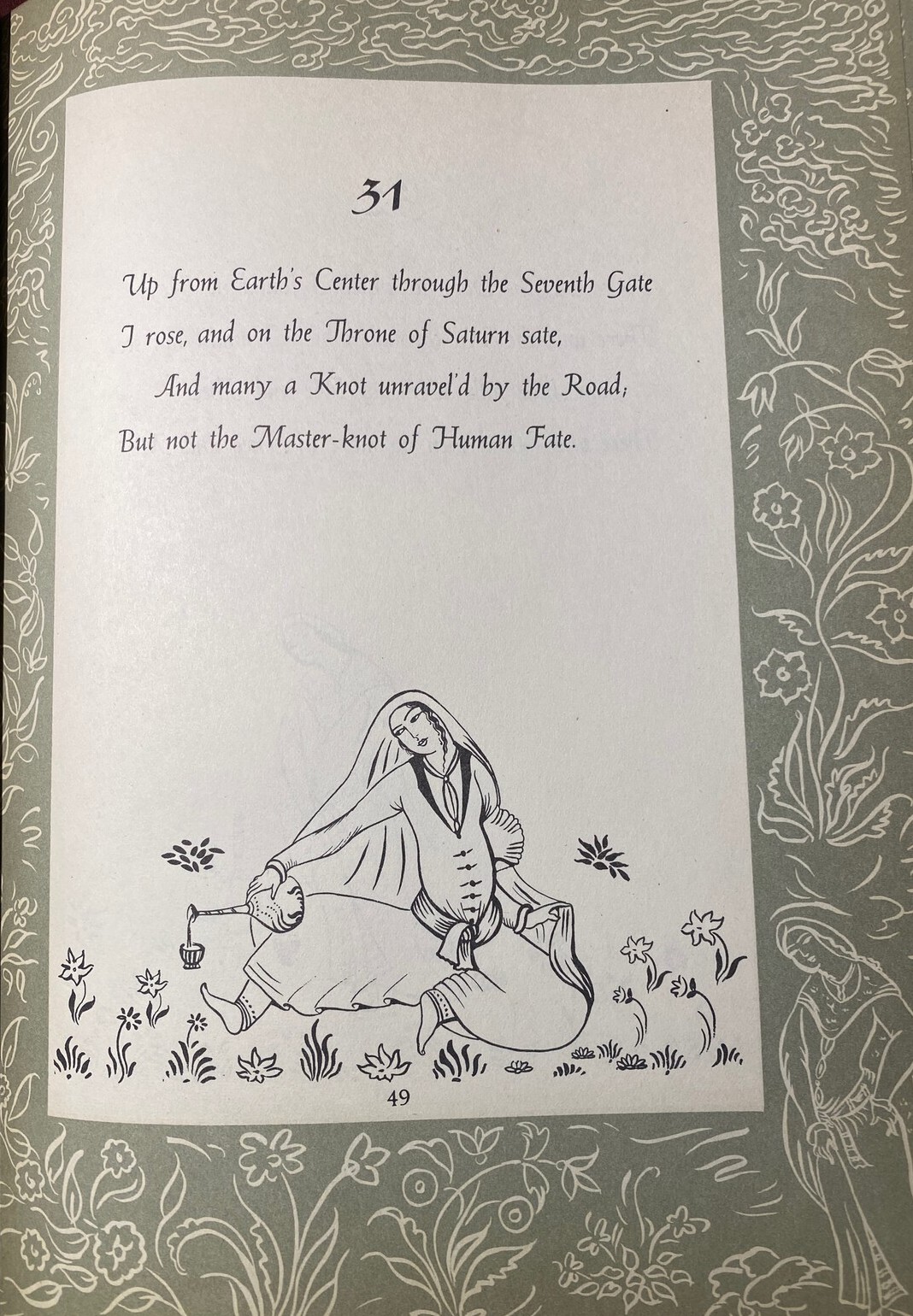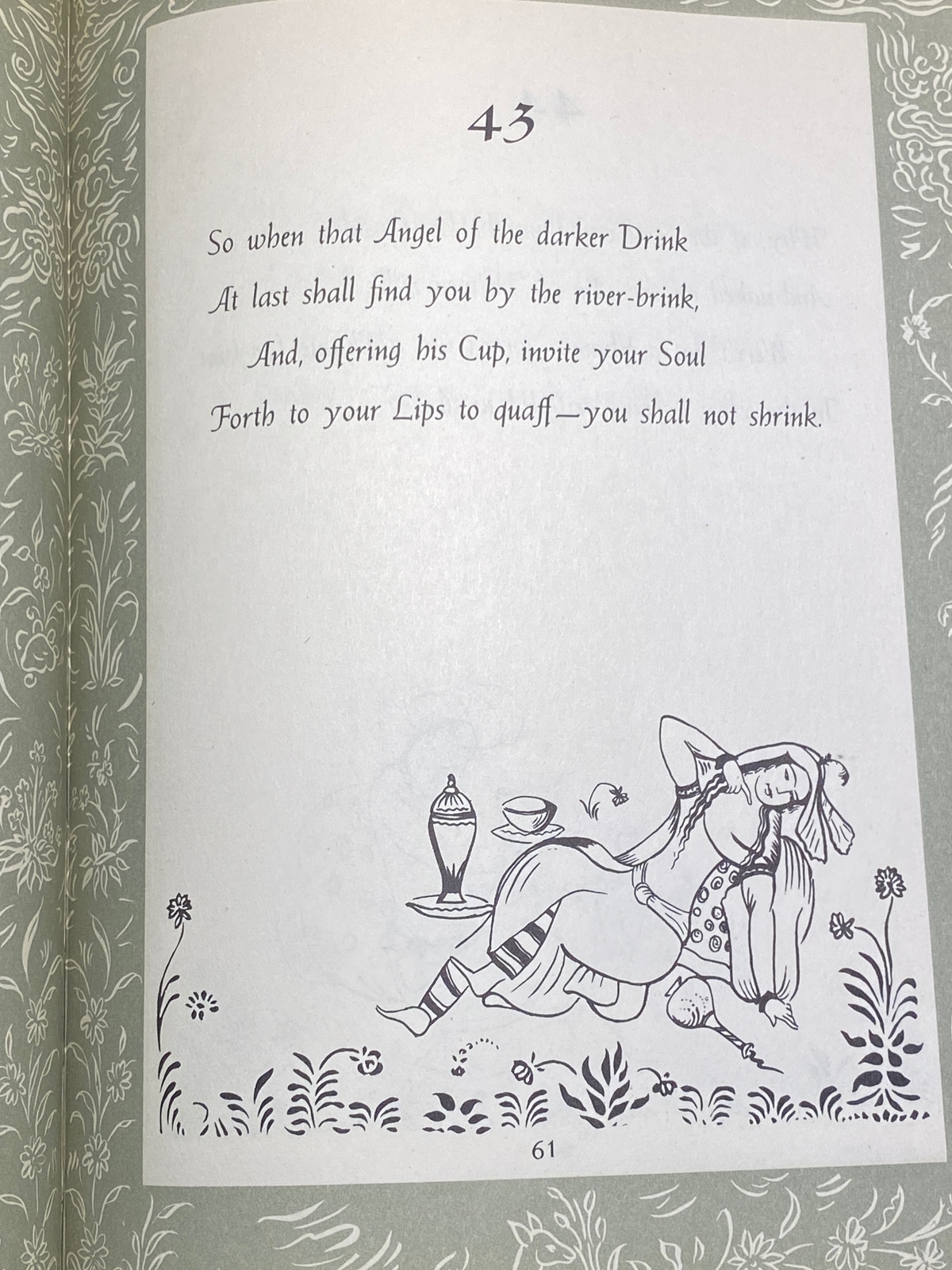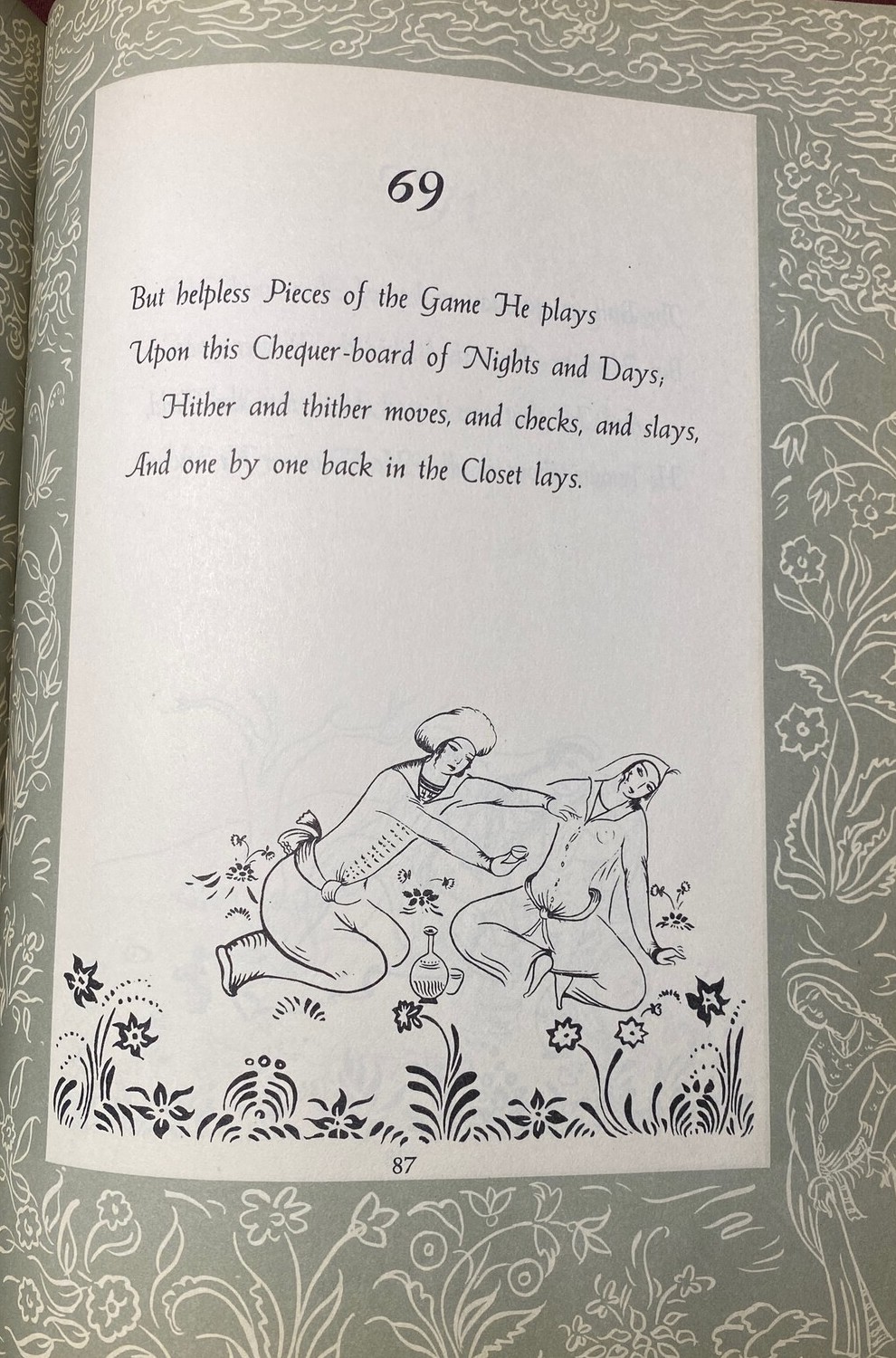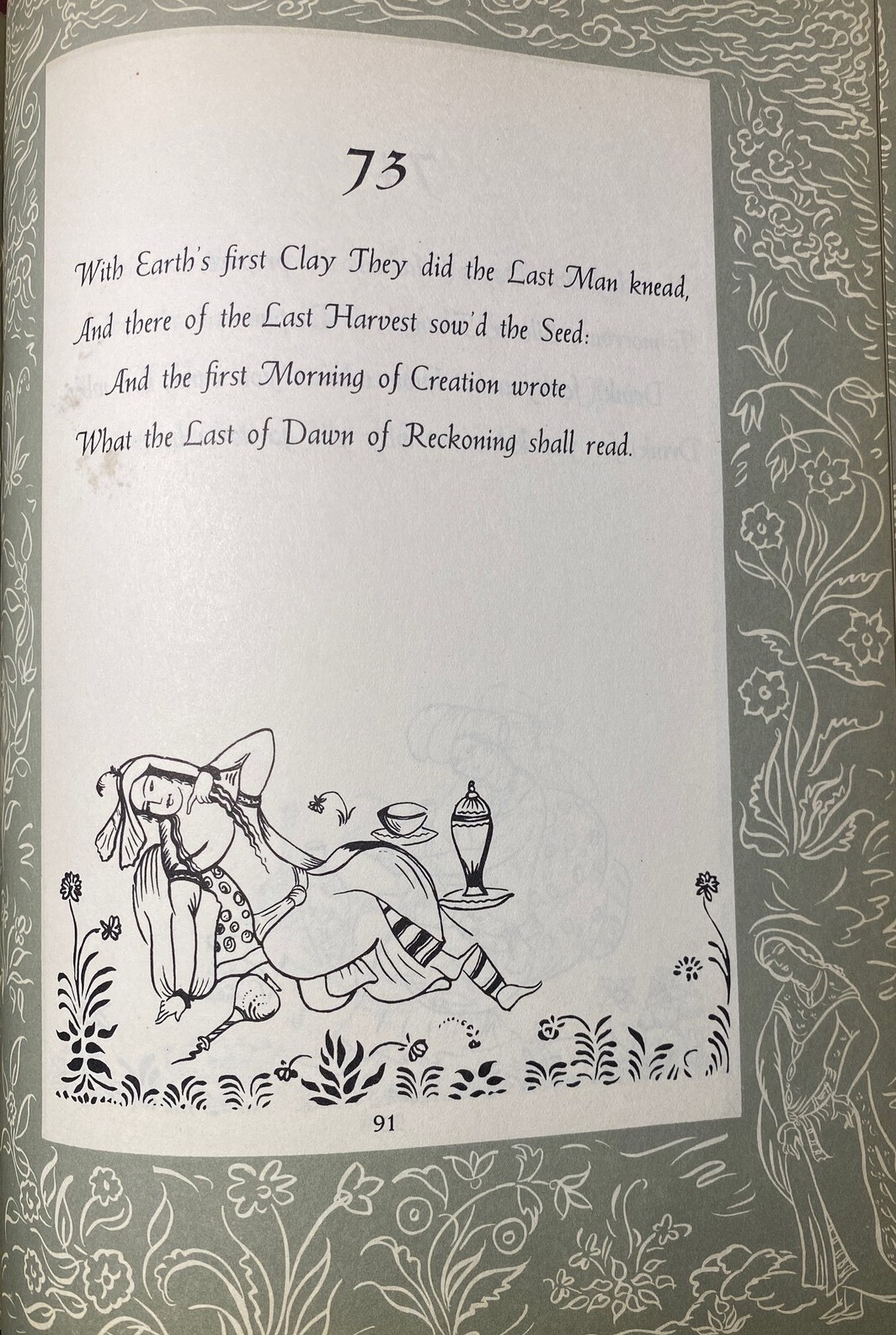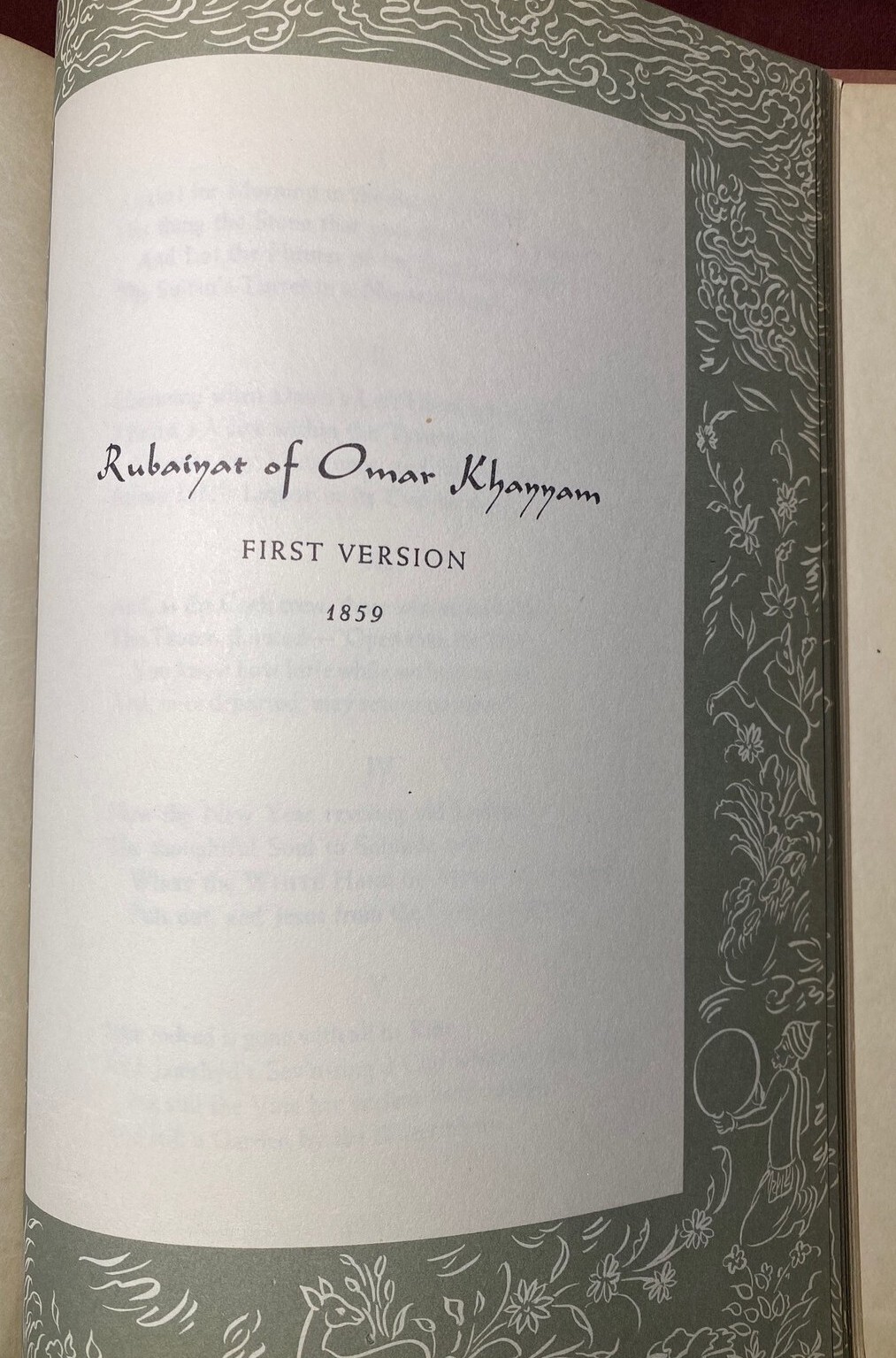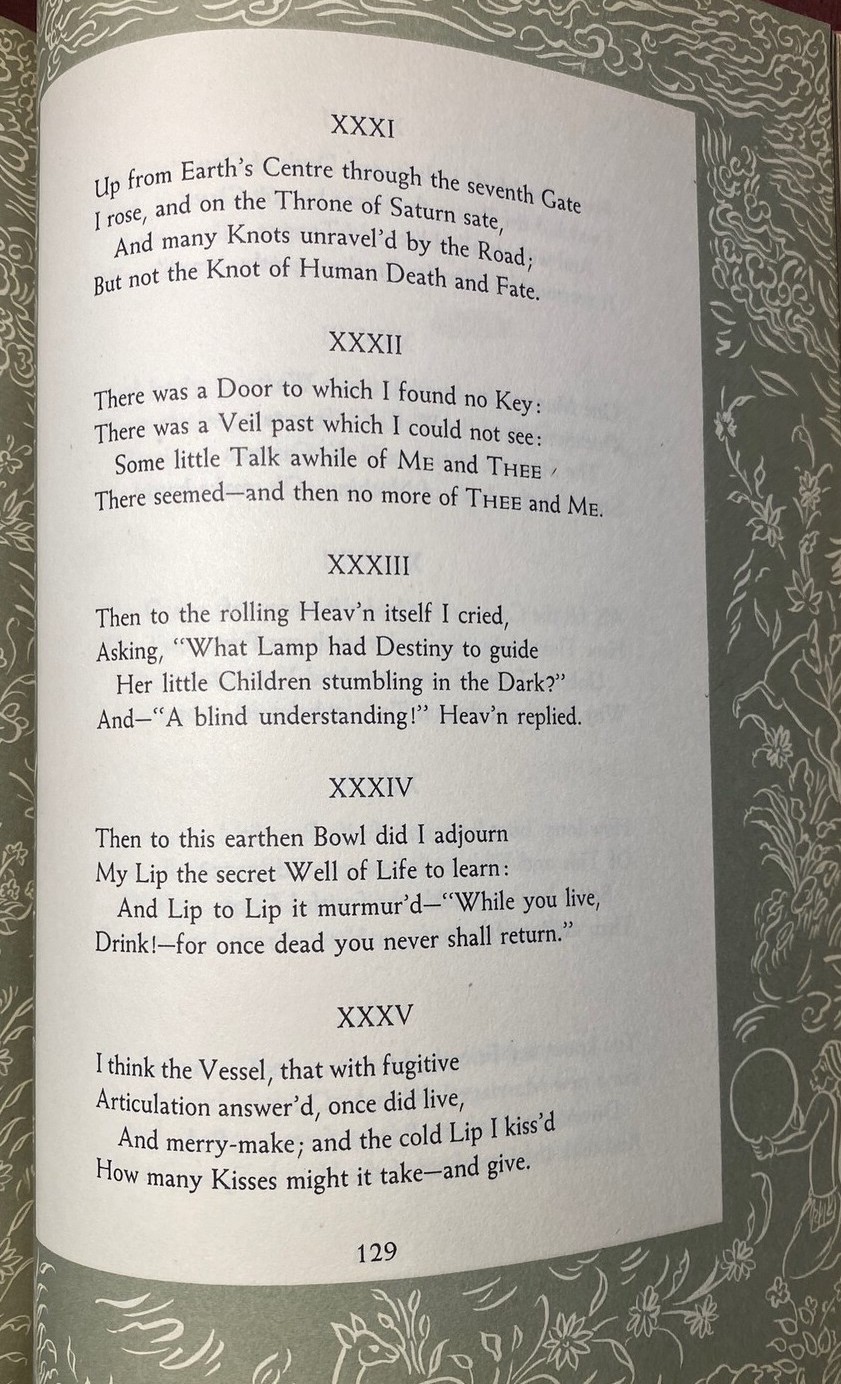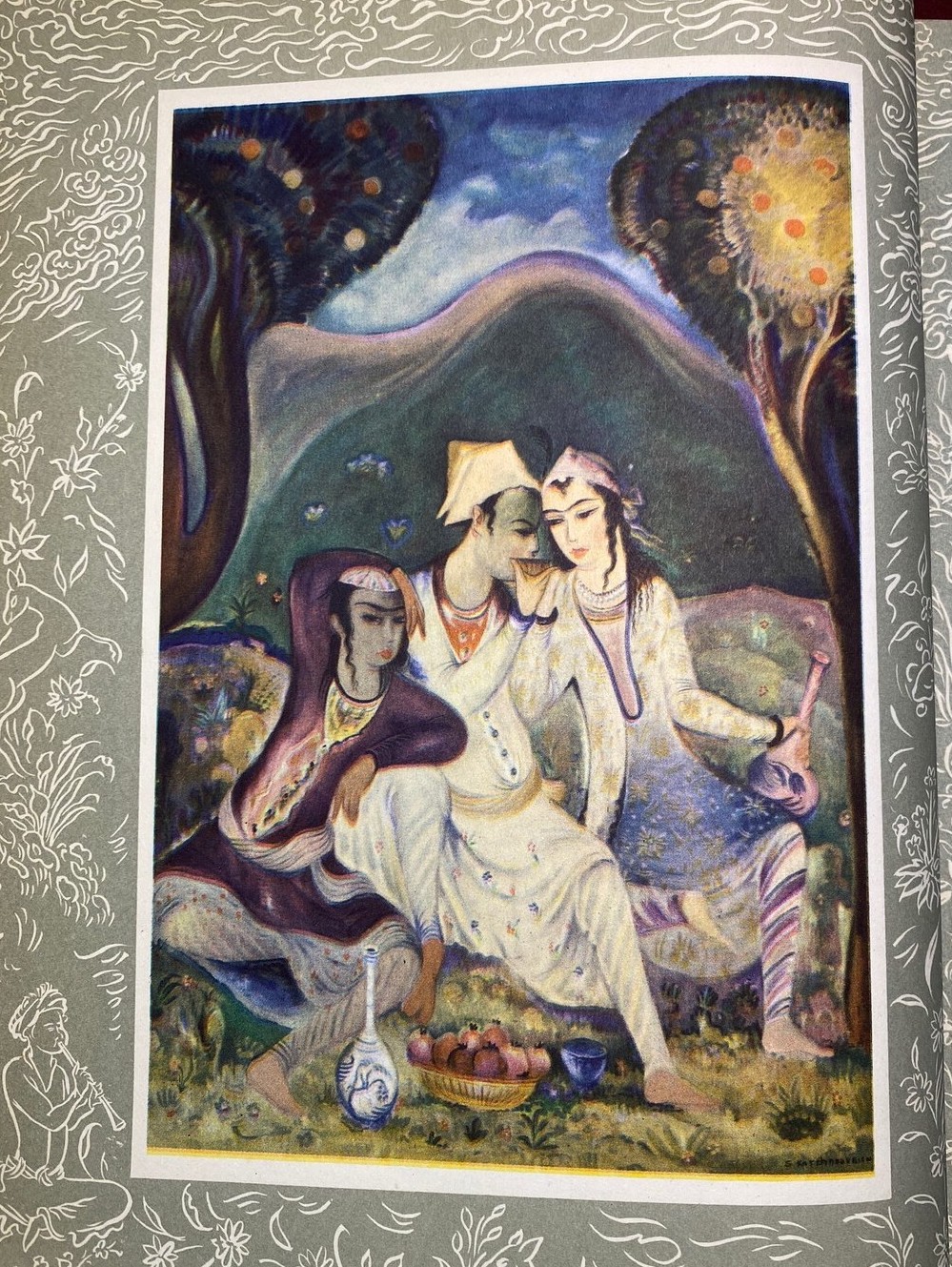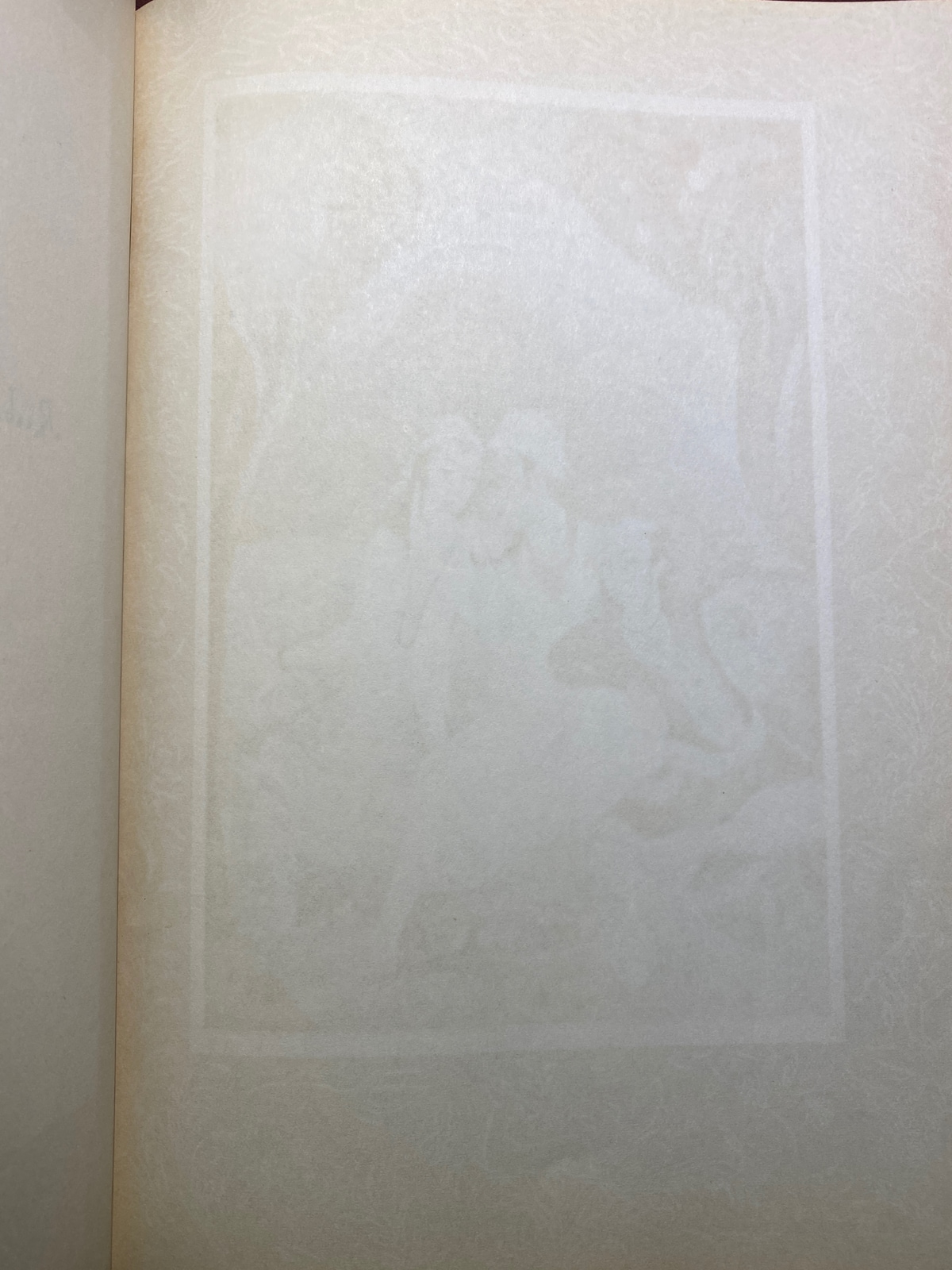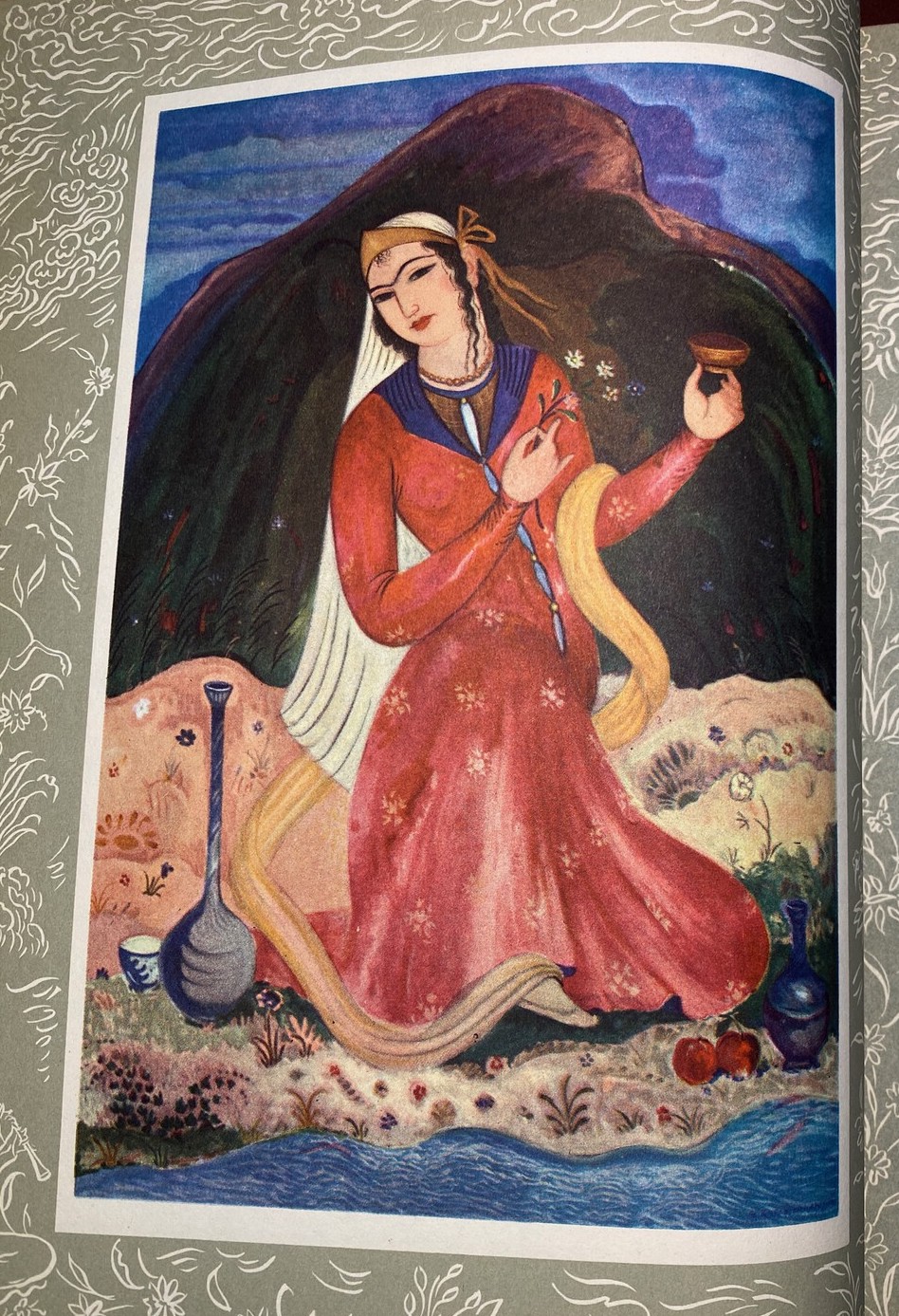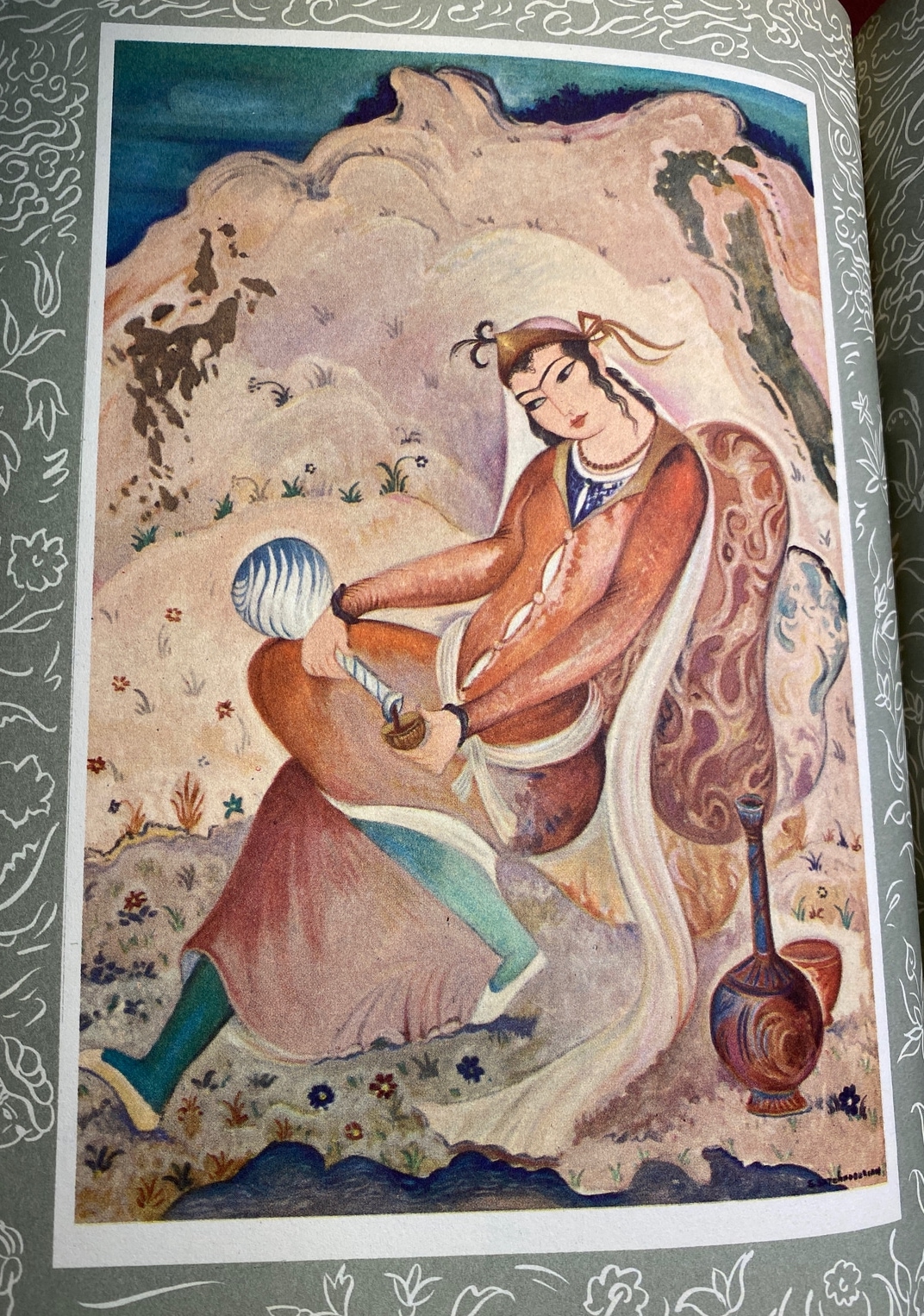The Rubaiyat of Omar Khayyam:
1946 Grosset & Dunlap Sarkis Katchadourian Edition
This 1946 Grosset & Dunlap edition contains drawings and artwork from Sarkis Katchadourian. I believe this is the first of his work I have seen in a Rubaiyat copy.
The part about this book that really stands out to me is how thorough it is with regards to its construction. It contains information on the printing, the lithographs, the paintings, the edition text, and a note about the artist. It is so complete in terms of accessory information. Because of that, there’s so much more metadata I have to share such as:
“The text of this book was hand set in 24 point Weiss type.” - (page 138 of the book)
Seriously! It’s fantastic and I wish more books had this type of data in it.
In addition to such technical details, it has this gem: that the paintings for this Rubaiyat edition were done specifically for it and were ‘now’ in the collection of one “George Mardikian” in San Francisco. Now, going into this, I had no idea who this man was. But a quick search yields clear results. George Mardikian was a restaurateur…and his famous restaurant’s name? Omar Khayyam! And he’s Armenian. Which is an intriguing connection to the artist: Sarkis Katchadourian was also Armenian. I feel like there could be a story about it somewhere…and somewhere those paintings are too. But here is this Rubaiyat edition!
The Book Itself
The book has great dimensions. It is large and robust.
I find it very charming that the book has a note about the artist that explains a little about him and his life. The table of contents is fantastic with its color plate listing.
The Poetry
I like how the drawings accompany the poetry on the bottom of the page. They flow well with the accompanied poetry.
The Illustrations
The color drawings are vibrant and really pop off of the page. I am personally not much of a fan of this art style, but I appreciate it.
History/Information Sourcing
This blog post from an Armenian history blog was quite interesting about the artist, Sarkis Katchadourian. Additionally, I found this delightful article about George Mardikian and his influence on cuisine. It’s surprising how there’s so much out there that’s directly tied to things we constantly experience in our society and the things we are interested in as individuals. Like I didn’t think Middle Eastern food in America would intertwine with my Rubaiyat research, but here we are!
